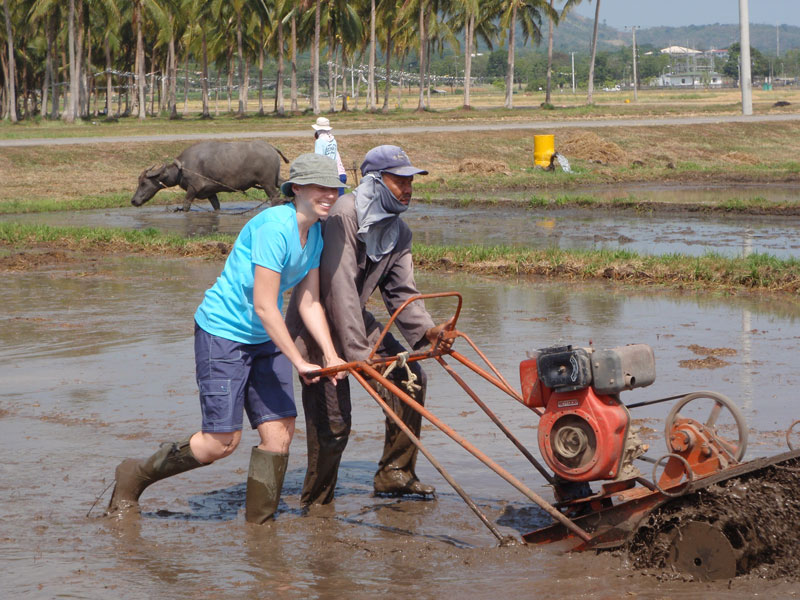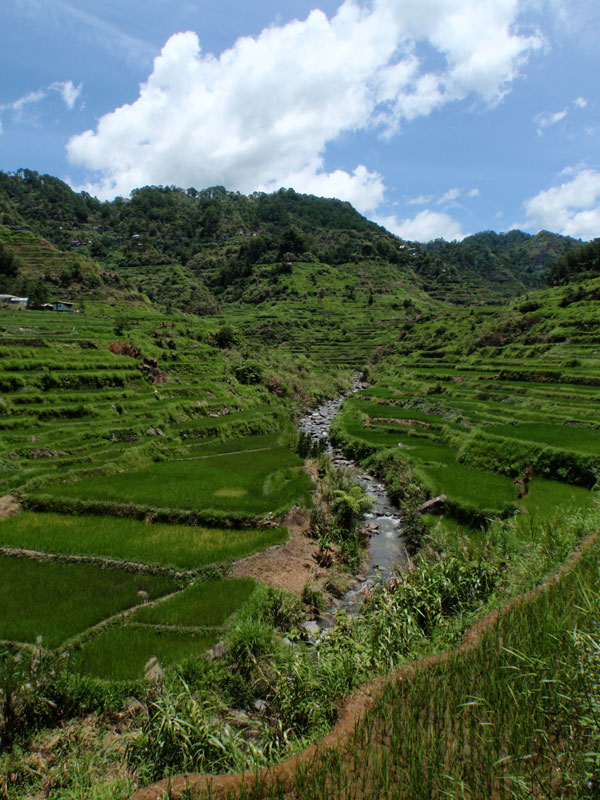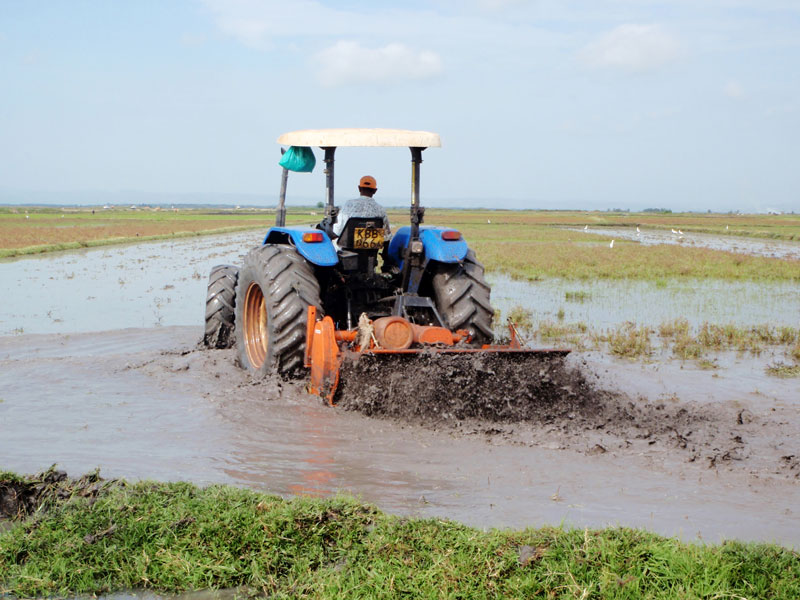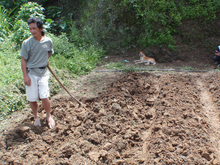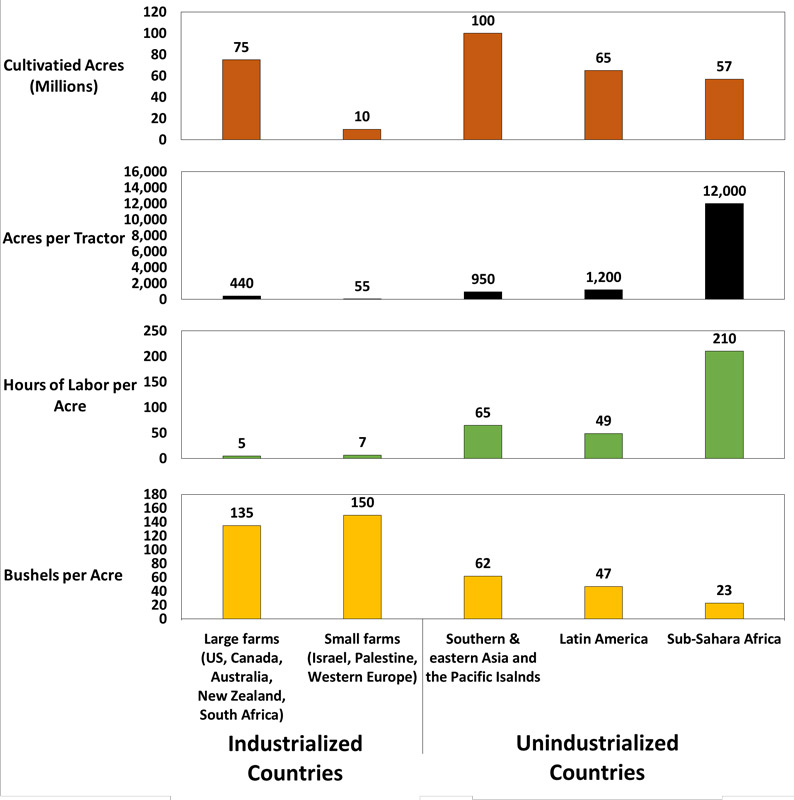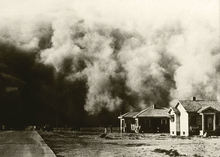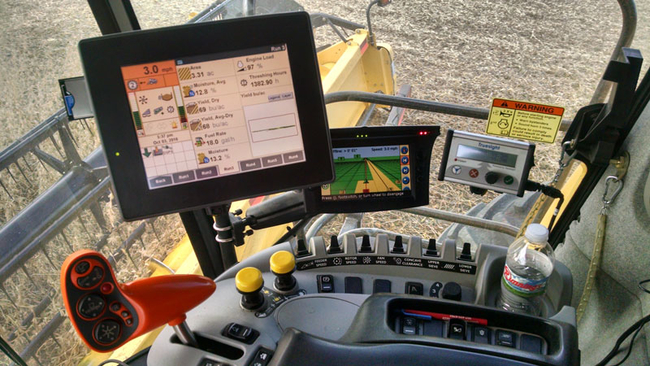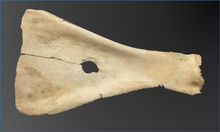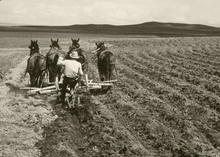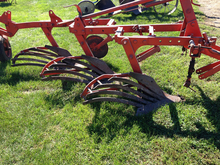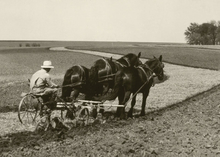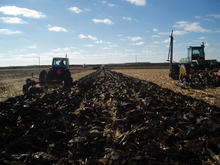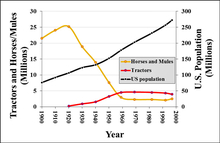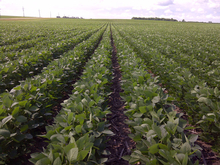Understanding soil tillage
Knowing what produces a good crop has been passed down from generation to generation for centuries. Farmers gained this knowledge the long and hard way, by experience through trial and error. Before we dig in too deeply, it’s beneficial to ask why we till the soil.
Most farmers and researchers will say they till to prepare a good seedbed. However, this doesn’t answer the question, nor does it place it in any historical perspective. It merely causes us to rephrase the question, to ask why we want a good seedbed.
Coming up with a clean, short answer isn’t easy. For now, addressing a slightly different question is perhaps more convenient and easier: What happens if we don’t prepare a good seedbed?
Weed competition
The historical answer is competition. Since humans first used “digging sticks” to grow a crop thousands of years ago, the main objective has been to provide the crop with the best chance to compete against weeds (Figure 1).
Disturbing the soil kills the weeds that compete for space, water, sunlight and nutrients with our seedlings. The disturbed soil also gives the seed a safe place without being eaten by birds and rodents. As the seed sprouts and the plant grows, farmers continue to thin out the competition with cultivation, giving the seed the advantage.
Other benefits of tillage
Over the centuries, farmers have recognized other benefits of tillage beyond just weed management. These include:
- Dries and warms soils during the wet, cool spring months.
- Breaks down the previous crop’s residue.
- Removes ruts and compaction.
- Incorporates broadcasted manures and fertilizers.
New inventions and technologies
The invention of herbicides replaced tillage as the primary tool for removing the weedy competition. These other benefits have now become what contemporary tillage implements are based on.
In the last 150 years, the advancement of science and technology has moved our farming practices forward at an astounding rate. This creates the need for up-to-date information, so producers can stay informed of their management options.
To gain perspective of the current state of modern tillage technologies and the variety of implement options available, we’re sharing a brief history of tilling the soil.
In ancient times, the difference between a good and bad crop determined if families had to solely rely on hunting and gathering to survive the upcoming months. Around the world today, many people still rely on handheld or draft animal-pulled implements to give them the best chance for maintaining their health and nutrition and even gaining some wealth.
In other societies with strong economies and appropriate landscapes, farmers rely on tractor-pulled and automated implements to grow crops on thousands of acres each year. Regardless of where they live or how sophisticated their tools are, all farmers’ primary goal has been to produce a plentiful crop by giving each plant a competitive advantage.
Digging sticks and draft-animal-powered agriculture
The methods and strategies for obtaining a plentiful crop differ from farmer to farmer based on their region, soil and crop of interest.
Puddling
For instance, a soil preparation strategy called puddling is very popular across the world for rice farmers (Figure 2).
This strategy contradicts any strategy used on corn or soybean fields in the midwestern United States. To puddle the soil, farmers plow and harrow the ground while it’s flooded, often with the use of draft animals.
The goal of puddling is to destroy soil aggregates so the ground becomes nearly impossible for water to penetrate, and can be flooded. This is the exact opposite of what’s desired for corn and soybean fields in the midwestern United States. The method would almost certainly cause failed corn and soybean stands.
However, rice is a wetland plant, so puddling the soil helps maintain and conserve water levels. This helps drown out competing plants and makes it much easier to transplant rice seedlings by hand, giving the rice a competitive advantage.
The Ifugao people in the Philippines have puddled the famous Banaue rice terraces using handheld and then draft-animal-pulled tools for more 2,000 years (Figure 3).
Mechanization in developing countries
The mechanization of rice production in Banaue with large, modern equipment is nearly impossible due to the terraces’ small size and the topography. This scene is similar across Asia and South America, with its terraced, steeply sloped landscapes.
In other regions, the economy is the primary restriction on agricultural mechanization. However, this is changing in some areas. In Kirinyaga, Kenya, mechanizing rice production with tractors and combines is on the rise for the Mwea Irrigation Scheme (Figure 4).
These efforts and many others around the world largely are made possible through international aid and the generous voluntary contributions of agricultural experts from around the world.
Handheld tools
Many grain (corn, beans, etc.) and root crop growers in the world’s rural regions solely rely on hoeing the soil by hand using digging sticks (Figure 5). Farms in the high mountainous regions, such as the Himalayas and Andes, generally are inaccessible for large equipment. Their soils also may be too rocky for tools pulled by draft animals.
Other farmers in sub-regions of Uganda, Sudan and Ethiopia rely on digging sticks and other handheld tools largely due to severe poverty after years of armed conflict.
Mechanization around the world
Agricultural mechanization and technology has helped enhance farmers’ productivity, particularly in industrialized countries with large farms that require timely field operations during the fall and spring.
Such countries include the United States, Canada, Australia, New Zealand and South Africa, which all have an average farm size of more than 250 acres. The arrival of mechanization in the early 1900s and its progression through the 2000s relieved the food pressures of these countries’ booming populations as the field laborer workforce dwindled.
The trends among corn yields, number of tractors and hours of labor per acres are evidence of the importance of mechanization (Figure 6). In general, mechanization is an important step in agricultural areas that have a dwindling workforce and require timely field operations due to weather constraints.
However, many regions aren’t conducive to mechanization either due to the shape of the landscape, the region’s economy or tradition.
Mechanization also isn’t always beneficial to a farmer’s bottom line if the region’s seasonal weather shifts are relatively mild and a substantial portion of the population rely directly on labor jobs in the field. In these areas, using digging sticks and draft-animal-pulled implements remain the most economical options.
Philosophy and knowledge of soil
In the United States, farmers, engineers and researchers have played a vital role in shaping the history and progression of the tillage implements available today.
Tillage tools used here have varied as much or more than most other regions of the world. Although many early activities were heavily influenced by Europe, substantial breakthroughs in soil management have been the product of work in the United States.
European settlers brought over and deployed soil management practices from their western European homes. Until the early 1900s after World War I, most American scientists continued to look to Europe for new philosophies and knowledge.
In these early days, many American scientists traveled to Europe for their advanced education and scientific training. During this time, European scientists attempted to uncover the sole principle or the one, single item that plants consumed in order to grow.
1500s
In the 1500s, Bernard Palissy of France proposed that plants took up salts from the earth. Crop residues and animal excrement would then return those salts to the soil for the plants to use. In general, he was somewhat correct. However, not all salts are the same nor are all salts beneficial to plants.
1600s
In the 1600s, Jan Baptista van Helmont of the Netherlands proposed water as the principle item that plants consumed after conducting his famous willow tree experiment. Other scientists proposed that air or even heat was the principle item.
Later, John Woodward of England and many others proposed the pulverized earth itself (individual soil particles) or the plants’ particulate decay was the principle.
Early 1700s
In the early 1700s, Jethro Tull of England also proposed that plants consumed the small, pulverized power of the earth (Figure 7). In other words, he thought plants actually took in pieces of the earth such as silts and clays:
Earth. That which nourishes and augments a plant is the true food of it. Every plant is Earth, and the growth and true increase of a plant is the addition of more Earth. . . . Suppose water, air, and heat, could be taken away, would it not remain to be a plant, tho’ a dead one? But suppose the earth of it taken away, what would then become of the plant?
Mr. Tull had a wide influence on agriculture across the world because he was the inventor of the cultivator (referred to as a horse hoe in those days) and the seed drill (Figure 8).
In his book “Horse-Hoeing Husbandry: An Essay on the Principles of Vegetation and Tillage,” first printed in 1731, Jethro Tull emphasized a need to pulverize the soil to a fine power so plants could access the fine pieces of earth that were otherwise bound up in clods of soil.
The first and second plowings with common ploughs scarce deserve the name of tillage; they rather serve to prepare the land for tillage. The third, fourth, and every subsequent plowing, may be of more benefit, and less expense, then any of the preceding ones. But the last plowings will be more advantageously performed by way of hoeing. For the finer land is made by tillage, the richer will it become, and the more plants it will maintain.
... I am in no doubt, that any soil (be it rich or poor) can ever be made too fine by tillage.
Late 1700s to the mid-1800s
Through the late 1700s to the mid-1800s, scientists such as Antoine Lavoisier and J.B. Boussingault of France and Justus von Liebig of Germany, discovered that no single principle was the source of the plant's growth. Instead, many chemicals – nutrients, oxygen, water and carbon – were responsible and required for plants to grow.
However, the soil still wasn’t recognized as a physical media that hosts a tremendous activity of biological life, which is responsible for cycling these nutrients. In the book, “Soil: The 1957 Yearbook of Agriculture,” the famous Charles Kellogg states the following in his chapter “We Seek; We Learn”:
The seemingly simple reasonableness of (these) views… swept away all the alchemistic theories of plant growth. … however, was based on the assumption that soils were static, lifeless storage bins filled with pulverized rocks, which held the water and nutrients and which farmers stirred in tillage.
Kellogg was a professor of soil science at North Dakota State University and served as Chief of the Bureau of Chemistry and Soils within the Soil Conservation Service (now the National Resource Conservation Service), playing a vital role in the National Cooperative Soil Survey Program.
Since the 1850s, scientists have made enormous advances in discovering plant nutrient requirements and in developing laboratory analyses for determining the amount of nutrients within soil, manures and plant tissues.
Although much of the earlier science was done in or with the heavy influence of Europe, American scientists and engineers made huge strides forward by testing management practices with practical field experiments.
The Agronomy Journal’s first publication on soil tillage
In 1919, M.C. Sewell at the Kansas Agricultural Experiment Station published “Tillage: A Review of the Literature” in the Agronomy Journal. The Agronomy Journal is the official journal of the American Society of Agronomy, which to this day remains the nation’s strongest collection of articles by professional agricultural researchers and scientists.
Sewell's article was the journal’s first publication on soil tillage. In the opening sentences of Sewell's article, he stated:
The prevailing opinions are so conflicting regarding plowing and cultivation that a review of the literature seems desirable
Yields in the early 1900s
Back in those days, corn yields exceeding a couple dozen bushels per acre meant you had a good year. In farmers’ fields today, producers raise ten times as much grain thanks to advances in technology, seeds and varieties.
Sewell's review included reference to 70 manuscripts, books, experimental station bulletins and state board of agriculture reports from as far back as the year 1790. Documents reported on a number of field studies across the United States and their mixed results as to whether soil tillage did or didn’t benefit crop yields. They also noted the consequences of tillage to the soil.
Tillage and erosion
A couple noteworthy references in Sewell’s paper include D. Lee’s 1849 article, “The Philosophy of Tillage,” and H.J. Water's 1888 report, “Relation of Tillage to Soil Conservation.” Water's report noted observations on the ease of soil washing (water erosion in today's terminology) following tillage and the subsequent decline in crop yield.
This report, and many more to follow over the next century, sparked the first concerns about soil and water conservation and the notion that soil lost to erosion is nonrenewable within our lifetimes. In Lee's article, he concluded:
Crop yields decline over time due to the oxidation and loss of soil organic matter.
Recommended practices in the early 1900s
Producers were also observing yield declines in their fields after years of continuous tillage and cultivation. David Rankin – whose farm inventory was valued at $3.2 million in 1908, most of which was in land – wrote a marvelous short book on this farming experience called “Modern Agricultural Methods Compared with Primitive Methods by the Life History of a Plain Farmer.”
First printed in the year 1909, his recommendation “to raise a good corn crop” was to invert the soil with the moldboard plow, pulverize the soil by harrowing or disking and then cultivate as soon as possible in the year. He then went on to advise at least weekly cultivations thereafter through the crop season. However, Mr. Rankin immediately followed with this statement:
Then when I raise four, five or more crops, just as the land will stand, I sow my corn field down to clover and timothy, and begin to pasture and feed on the land three to five years, and get good rich soil.
By putting his corn fields to pasture for several years, Mr. Rankin was unknowingly building back soil organic matter and creating soil aggregates.
During the 1930s, the Dust Bowl, also known as the Dirty Thirties, emphasized the need for soil conservation and adopting reduced tillage strategies (Figure 10). Although the dust storms tended to lessen, soils continued to erode in many regions.
New strategies were developed to reduce tillage even more and leave more of the soil protected from wind and water erosion. New research on soils’ physical and biological properties emerged and the complex nature of soil began to be revealed.
The importance of well-structured soil
The most profound findings stemmed from our new understanding soil aggregation and structure’s beneficial role in the soil environment and crop production (Figure 11). These findings sharply contrast with previous eras, when producers and scientists alike believed a fine, pulverized power was essential for a good seedbed.
Benefits
Through modern research, we now know the following benefits emerge from a well-aggregated and -structured soil:
- Reduced bulk density
- Resistance to soil compaction
- Improved water infiltration and drainage
- Longer retention of plant-available water
- Reduced nutrient leaching
- Less soil erosion
- Enhanced biological activity
- Increased soil organic matter
All these benefits are based on building and preserving good soil structure. Tillage breaks apart soil aggregates, damaging the existing soil structure. The deeper and more aggressive the tillage, the less structure the soil will have.
In some production systems, such as in rice, this may actually be desirable. However, for nearly all other crops, a well-structured soil is essential for sustainable crop production.
Managing crop residues
Producers still face the challenge of managing crop residues. Since the 1940s, advances in plant breeding, herbicide use and technology has produced high-yielding crops that also leave large quantities of crop residues.
These advances shifted the use of tillage from a primary way to manage weeds to what’s now a primary way to manage crop residues. Whether to till the soil and how deeply or aggressively to till it continues to be a vital question to most producers.
Tillage tools
Before Europeans settled North America, Native Americans developed an array of handheld digging sticks using their natural resources. Later, settlers and Native Americans began to integrate horse- and oxen-drawn implements initially made from wood and then from iron and steel in following decades.
Mechanization replaced draft animals and paralleled the development of the oil and gas industry.
Today, mechanized implements are becoming wired up with sensors, circuits and screens coupled with hydraulics. This allows producers to monitor progress in real time without leaving the tractor’s cab, except for the initial adjustments to the field’s current soil moisture conditions (Figure 12).
Digging tools
From the beginning, many of the digging sticks used by Native Americans and the early settlers had wooden handles tethered to a strong shovel-like object to work the soil. In the Great Plains, bison shoulder blades were sometimes tethered to the wooden handle (Figure 13).
In the Ozarks, a flat, sharp-edged stone or even a thick mollusk shell was used. Although primarily made for farming, these tools were likely used to make building foundations. In the west’s desert regions, Native Americans would also dig up and remove the soil above the caliche hardpans.
This caliche layer, sometimes called petrocalcic soil horizon or Kankar, consists of soil particles cemented together by the accumulation of calcium carbonate (also called lime). Native Americans would sometimes use this layer as their buildings’ foundation and flooring.
Soil management methods
Most European settlers managed their soils by using the same methods they implemented back in western Europe. They cleared forests, applied fertilizers and lime to the acidic soils and plowed, harrowed and cultivated what’s now the eastern United States by hand or draft animal-pulled implements (Figure 14).
These sloped soils began to lose their fertility and eroded in the humid, rain-abundant climate. In the century between the American Revolution and the Civil War, the nation’s youth progressively moved westward to richer soils in the prairies of the Midwest and Great Plains, leaving nearly all the northeastern farms to grow back to forest.
Early plows
Farmers broke sod and cultivated the American prairies using horse- and oxen-drawn moldboard plows (Figure 15). They then used the moldboard plows, shovel plows, discs, harrows and rolling baskets to prepare seedbeds on the rich, black soils.
At this time, the moldboard plows had a wooden moldboard with an iron share and coulter. The coulter would vertically slice open the soil in front of the horizontal-cutting iron share. The moldboard would then lift and invert the soil off to the side.
David Rankin reminisced about purchasing his first plow around the year 1840 in his book “Modern Agricultural Methods Compared with Primitive Methods by the Life History of a Plain Farmer.” He wrote:
With these plows [wooden moldboards] you had to carry a paddle and clean the plow about every twenty rods. A good team of oxen would plow about an acre each day.
The introduction of steel plows
In the 1830s, John Deere fabricated the first steel moldboard plow. The polished steel had the advantage of more easily cutting through the soil and the benefit of the soil easily sliding off the moldboard without sticking.
This time-saving modification gave way to the end of the walking plows in the United States. Although horse or oxen already drew plows, a plowman needed to walk behind the plow to steer and control the depth of tillage with a set of handles.
Horses needed regular resting throughout the day to maintain strength for timely operation. The easier plowing with the steel implement allowed plowmen to ride on a seat framed onto the plow with adjustable wheels to control a steady plow depth.
Productivity improvements
Even with the added weight of the seat, wheels and a plowman, the steel moldboard plow could turn two to three acres per day when its wooden predecessor could only turn one acre (Figure 16).
Soon after the invention of the steel plow, farmers and engineers began to build implements with two, three and sometimes four rows of plows or cultivators to work the soil between plant rows (called gang plows and straddle-row cultivators).
The decline of single plow implements
The use of the single plow implement (called a Sulky plow) was now starting to diminish. In David Rankin's book, he claims to have been the first to design and build a straddle-row cultivator in 1853.
In these days, a single person could cultivate four acres per day by hand with a single shovel and eight acres per day with a single-row cultivator drawn by a horse. By attaching a second row of shovels to the cultivator, the same person could now cultivate both sides of a plant row at the same time, doubling their efficiency to 16 acres per day.
As for the moldboard plow, double-sided steel moldboards (called lister plows or furrow plows among many other names internationally) began to be fabricated more often. These lister plows moved soil to both sides of the plow creating a furrow and ridge.
Technology advancements
As technology advanced, more rows of plows, shovels and harrows were added in series to implements as steam-engine tractors and then diesel-powered tractors were invented. By the late 1950s, the average farmer had more tractors than draft animals and could pull several gangs of plows and cultivators in a single pass (Figure 18).
Reduced tillage strategies
After the Dirty Thirties or Dust Bowl, emphasis shifted from the moldboard plow method of inverting the soil to the need for soil conservation and the adoption of reduced tillage strategies.
The chisel plow replaced the moldboard plow on many fields as the primary tillage pass. A chisel plow fractures and tills the soil while leaving approximately 30 percent of the soil surface covered with the previous crop's residue.
Secondary tillage passes stayed relatively the same with discs, harrows and cultivators with or without rolling baskets. As soils continued to erode in many regions, new strategies were developed to reduce tillage even further and leave more of the soil protected from wind and water erosion.
The decline of tillage for weed control
As modern use of herbicides developed, weeds were more easily controlled. Therefore, soil tillage was no longer the primary means for weed control, but only served to prepare a “good seedbed.” There wasn’t yet a clean, short answer to the question, “Why do we want a good seedbed?”
No-till practices
In the 1970s, no-till practices gained in popularity. By definition, no-till fields receive no primary or secondary tillage operations; the only disturbance to the soil occurs during planting.
Engineering innovations of the no-till drill helped producers obtain good crop stands in the presence of high crop residue quantities. However, no-tilled fields were difficult to manage in wet, clayey soils and in frigid regions.
Modern tillage implements
Since then, a number of other intermediate tillage implements have been developed. These implements have the option of countless configurations and designs of shanks, coulters, disks and harrows with adjustable depths and pitches.
These modern implements give producers the ability to control the aggressiveness of their primary tillage and how much residue remains on the soil surface.
Note: We use many vague categorical terms throughout the page when discussing these new tillage strategies that purposefully leave some portion of the previous crop residue on the soil surface to reduce soil erosion.
Terms such as conservation tillage, minimal tillage, reduced tillage, no tillage, etc., are found throughout the internet as well as in textbooks and the scientific literature. Although some government agencies and scientific societies clearly define specific criteria for each of these terms (typically a range of percent soil cover by crop residue), their actual use in any level of literature or personal discussions is inconsistent.
This is why we avoid these terms (with the exception of "no-till" given the literal sense of the phrase) and only use the names of the tillage implements themselves to reduce any confusion.
This content is a collaboration between the University of Minnesota and North Dakota State University.
Peer review was provided by Richard Wolkowski, emeritus Extension soil scientist, University of Wisconsin-Madison.
Reviewed in 2022



